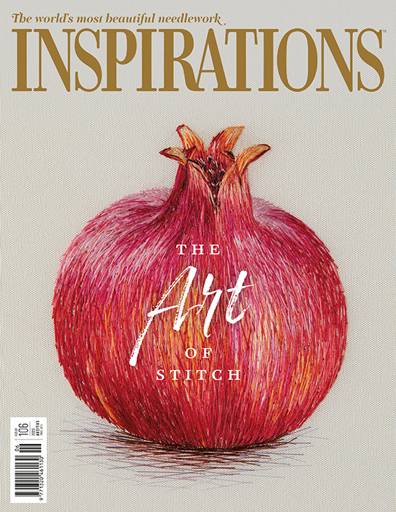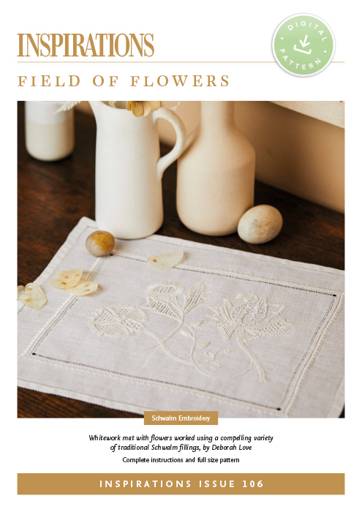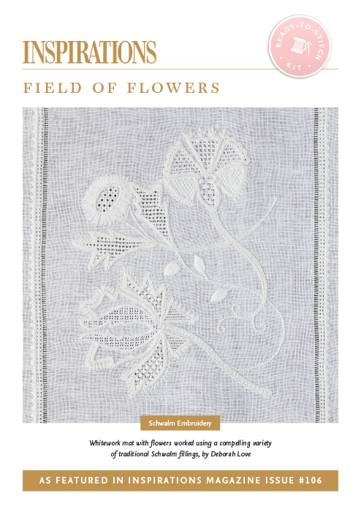Field of Flowers by Deborah Love
24TH APRIL 2020 - ASU #231
One of the oldest and most widely practiced forms of embroidery is whitework. Whitework is a catchall term that refers to embroidery worked in white thread on a white ground. However, that deceptively simple description doesn’t come close to representing the variety of different techniques which fall under the umbrella of whitework.

Whitework has been practiced in all parts of the world and has been done for millennia by embroiderers of all kinds. Some of the earliest whitework dates back to a Danish grave site from over 3,000 years ago, but, due to the unfortunate impermanence of textiles, the technique could potentially be much older.

Whitework can be worked using either counted techniques or surface techniques and can involve cutwork, drawn thread or pulled thread work. Or, in the case of Schwalm embroidery, the specific type of whitework Deborah Love has used to create Field of Flowers from Inspirations issue #106, can be worked using a combination of almost all of them.

Schwalm embroidery emerged from the region of the Schwalm River in Germany during the eighteenth and nineteenth centuries. Although there was a lull in its practice after World War II, it was revived in a newer, modern form which is what we enjoy today.
One of the delightful facts about the early forms of Schwalm was that the ground fabric was completely covered with stitching.
This was apparently to prevent the release of evil spirits through the fabric – known as abhorrence of the void.
Fortunately, as we now live in a more ‘enlightened’ world, modern Schwalm designs, such as Field of Flowers, allow for harmony between the intricate patterns and flower shapes, and elegant white linen background.

Schwalm embroidery breaches the boundaries of the counted/surface embroidery divide. Worked on traditionally counted linen, the patterns within the petal shapes all require careful counting.
However, the shapes themselves exist without relation to the counted threads – indeed, in order to achieve a perfect curve, one needs to work with a sharp needle and follow the lines of the shape, not the holes of the fabric.
So often the needle seems to have a mind of its own and is magnetically drawn to that pesky hole!
In order to succeed with Schwalm, you need to work the outline of each shape before you do the filling. When you work the filling stitches you may need to compensate when you reach the boundary of the shape as you may not be able to work the complete stitch.
This can be challenging, but the satisfaction of filling the carnation, daisy, tulip and leaves of Field of Flowers accurately is worth the time it takes to think about it.

Surface stitchers, counted stitchers, drawn thread lovers, pulled thread aficionados – Field of Flowers by Deborah Love is just right for all of you. Stitch the parts you love and learn from those parts that are new to you. This project offers the best of everything in one beautiful, luminous, pure white package.
Make Your Own Field of Flowers

Step 1 – Purchase Project Instructions
Field of Flowers by Deborah Love is a lovely whitework mat with flowers worked using a compelling variety of traditional Schwalm fillings.

Printed Magazine
Inspirations Issue 106
Shop Now
Digital Pattern
Field of Flowers - i106 Digital
Shop NowStep 2 – Purchase Ready-To-Stitch Kit
The Inspirations Ready-To-Stitch kit for Field of Flowers includes everything* you need to re-create this whitework mat: Fabric (unprinted), embroidery threads and needles.

